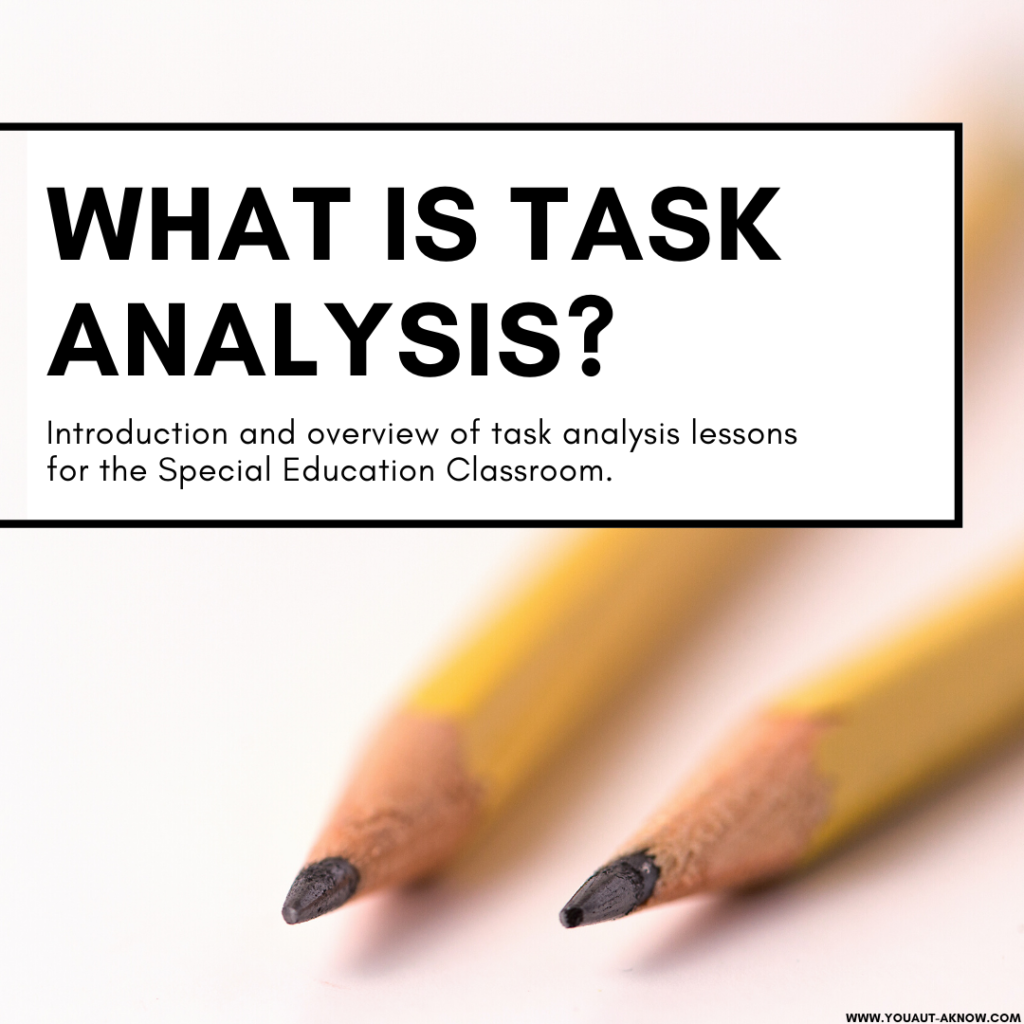
If you’ve been teaching in an Autism classroom, you’ve probably heard the term Task Analysis once or twice, but you may be asking what it is an how you can implement teaching with Task Analysis in your classroom. Check out this quick tutorial and I’ll explain how I plan Task Analysis lessons, implement the lessons, and take data.
What is Task Analysis?
Task Analysis is an Evidence Based Practice for Autism that involves teaching through prompting and fading. This is a great way to teach students routines and any lesson or skill that has steps that students will need to complete. If the skill you’re teaching involves a sequence of steps, you’re going to want to grab a Task Analysis.
How to Plan Task Analysis Lessons
When planning lessons, I first look at the skills I want to teach my students. Am I working on an academic skill or a functional routine? I love teaching academic skills like addition and subtraction with Task Analysis because I can define which steps the students will need to complete. Then I’m able to create a data collection sheet that will reflect each of those steps. I also find task analysis is the best tool for teaching functional routines.
Building a Lesson
When I prepare for a lesson that will use Task Analysis, I first complete the task myself and write down the steps I needed to do in order to complete the task. For example, when I will be teaching a hand washing routine, I walk through my personal hand washing routine. As I do this, I have written down the steps I use. It looks something like this:
- Put soap on hands
- Rub soap on both hands
- Turn on water
- Rinse hands
- Turn off water
- Retrieve paper towel
- Dry hands
- Throw away paper towel
- Exit restroom
Now that I have defined the steps need to complete the hand washing routine, I can create a lesson plan and data sheet to use with my students.
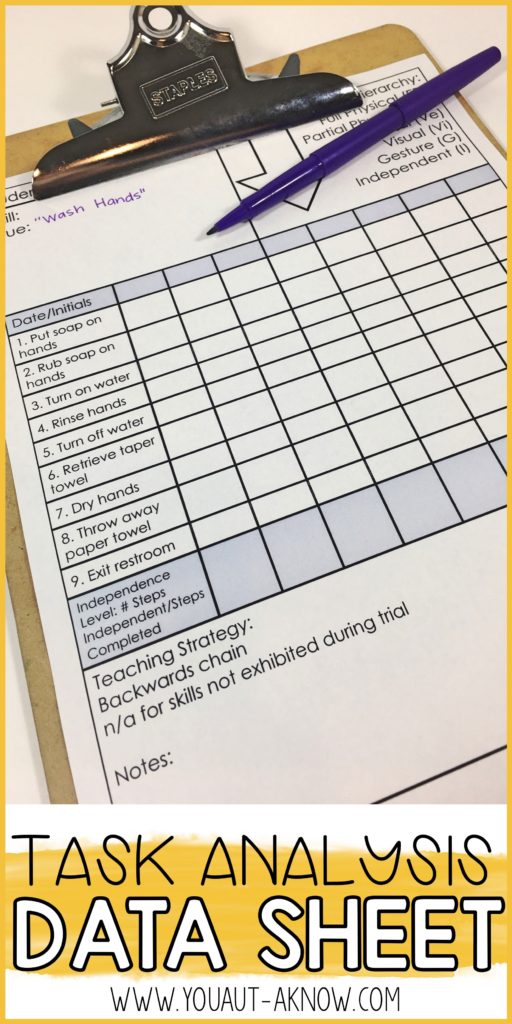
Another highlight of Task Analysis is that my data sheets become my lesson plans. The cue is listed on the data sheet as well as the steps to complete and the prompt level used. When the next teacher teaches this skill, they are able to see the last prompt level used and start there with the student.
How to Implement Task Analysis Lessons
These lessons are taught through prompting and fading until students can perform tasks independently. The data sheet I talked about earlier becomes our lesson plan for teaching students to wash their hands (or whatever task it is you are teaching). I always make sure to list the cue at the top of my lesson plan and the teaching steps are listed down the side of the data sheet.
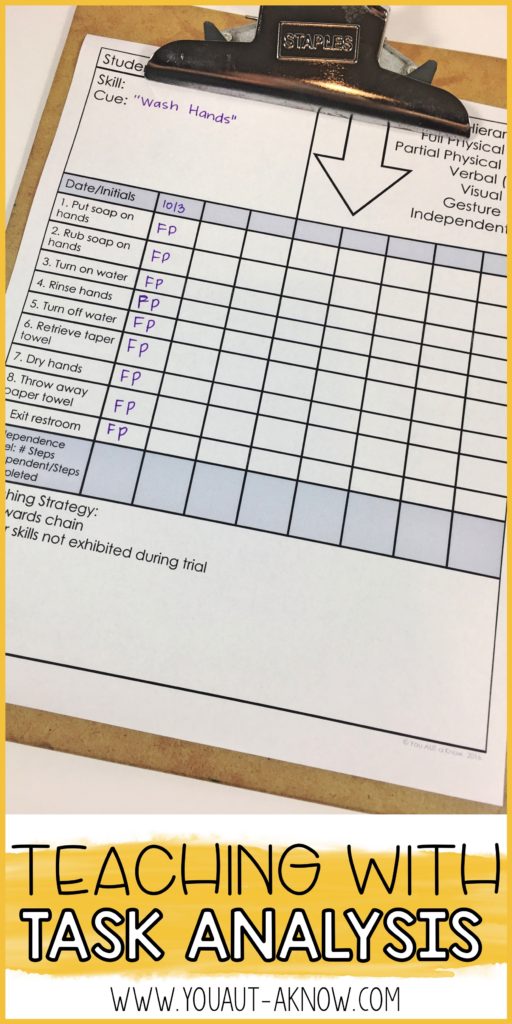
How to Use Prompting to Teach a Skill
I usually make a pile of data sheets and put them in the space they will be used. Academic data sheets are usually placed in student binders while Functional Routine data is placed in the area where the routine will be performed. The hand washing routine data typically lives in the bathroom or by the sink. Occasionally it is placed by our exit door since we do wash hands in a variety of restrooms across campus.
When I start a new lesson, I use full physical prompting for the entire chain for about 4-5 trails. Then, depending on the way I’d like to fade prompts (forwards or backwards), I fade to partial physical for that step (first or last). I continue to fade prompts until the student is independent at the target step in the sequence. Then I begin fading the next step in the chain and so on and so forth until the student can complete the chain with 100% independence.
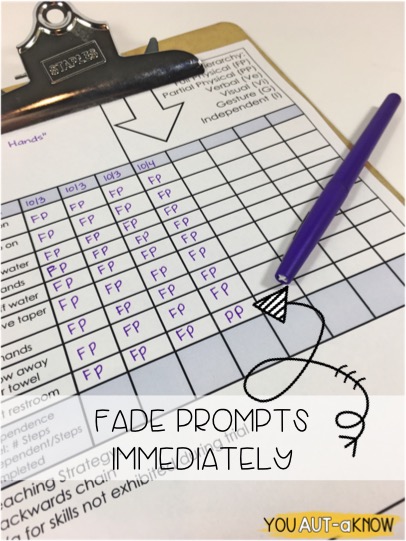
How to Collect Data
When deciding to teach a Task Analysis lesson, you will need to decide how you want to fade the prompts in order to make your students independent in the task. You can either fade prompts from the beginning of the chain or the end of the chain. This decision is really up to you as the teacher. I usually tend to fade backwards just because I like my students to end a task being successful.
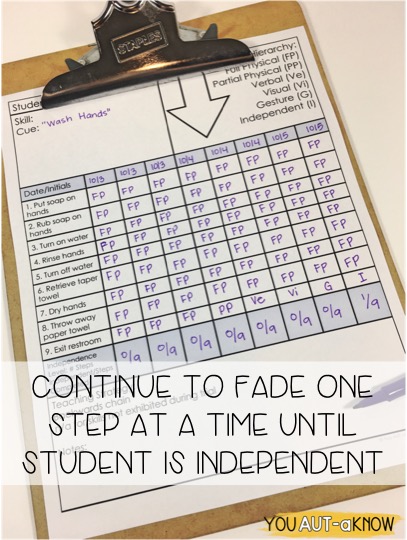
I also like to make sure my data sheets have the prompt hierarchy listed at the top so my staff is quickly able to reference it and work towards student independence. When staff members take data, they simply mark in the level of prompt needed for each step. This makes it super easy for me to glance at the data and see how close we are getting towards independence.
Have you used Task Analysis to teach in your classroom? What are some of your favorite skills to teach using this Evidence Based Practice? Leave a comment and let me know!
Interested in getting started with Task Analysis lessons in your classroom? Grab my Task Analysis data sheets. They’re completely editable so you can customize them for routines in your classroom. I’ve also included some common routines, so you’re ready to print and go with these activities. Check out the data sheets here.
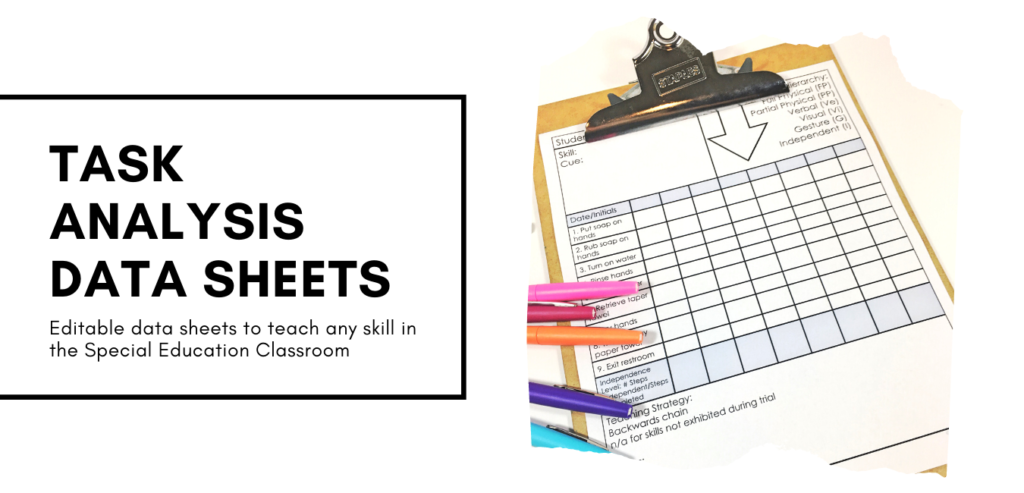






I have used task analysis data with my students for using the restroom as a part of my potty training program. I have not used it in academics but I think it will probably help me because I struggle to find meaningful data that helps me to acutely measure learning.
Roz,
I also started using Task Analysis for Potty Training and quickly saw how I could use it in so many more settings. Stay tuned, in the next couple weeks I'll be sharing how I use Task Analysis to teach Academic content.
I love your document. Are you selling it at all on TPT or would you be interested in sharing the template. It looks clear and clean for paraprofessionals but full of information.
It's something I'm slowly working on getting together. If you email me at erin@youaut-aknow.com I can help you out 🙂